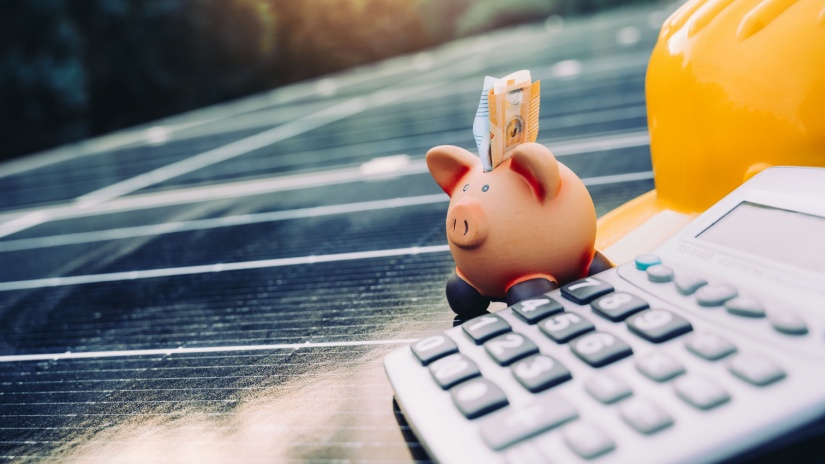Knowledge Centre
Is a solar investment expensive?

Australia is one of the sunniest continents on Earth, making it a prime candidate for solar power adoption. As households and businesses increasingly look toward cleaner, more sustainable energy sources, the question often arises: Is solar an expensive investment?
While the answer isn't a simple yes or no, understanding what's involved - beyond just the upfront costs - helps paint a clearer picture of the true value of going solar.
The components behind a solar investment
When people refer to "solar power," they're often thinking of the panels mounted on rooftops. But solar power systems are more complex than just the shiny panels. The cost of a solar setup in Australia typically includes several key components:
Solar panels
These are the most visible part of the system, converting sunlight into electricity. The efficiency, durability, and brand of the panels can all influence the price. Some panels are designed to last over 25 years, and others include aesthetic or performance upgrades.
Inverter
The inverter converts the direct current (DC) produced by the panels into alternating current (AC), which powers your home or business. There are standard string inverters and more advanced microinverters, which can offer greater performance but at a higher upfront cost.
Battery storage (optional but increasingly popular)
Batteries store excess energy generated during the day for use at night or during power outages. While they significantly increase the initial investment, they can also reduce reliance on the grid and offer greater energy independence.
Mounting systems and installation
Not all rooftops are created equal. Installation costs can vary depending on roof type, angle, accessibility, and structural reinforcements. Labour, compliance, and certifications also add to the final cost.
System monitoring and smart tech
Many modern systems include digital tools that allow users to track energy generation and consumption in real time. These extras may not be essential but can enhance the experience and allow for better energy management.
Ongoing costs: Maintenance and upkeep
One of the lesser-known advantages of solar systems is their low maintenance. Panels have no moving parts and typically just require periodic cleaning to remove dirt, dust, or bird droppings.
However, it's wise to schedule a professional inspection every few years to ensure optimal performance and identify potential wear on inverters or wiring.
Battery systems may need more attention, with lifespans typically shorter than solar panels. Battery management systems and software may also require periodic updates or servicing.
Long-term savings: The payback narrative
One of the most compelling reasons Australians go solar is the long-term financial benefit. While upfront costs can feel steep, they are offset by reductions in electricity bills over time. In many cases, households begin to see savings within a few years.
The more electricity a household consumes during daylight hours (or stores in a battery), the greater the benefit. Most systems are eligible for government incentives such as Small-scale Technology Certificates (STCs), which effectively reduce the overall cost and accelerate payback timelines.
Grid-tied vs. Off-grid systems
Grid-connected solar systems allow users to draw from the grid when needed and send excess power back, often earning feed-in tariffs. These setups tend to be more cost-effective and are ideal for most suburban homes.
Off-grid systems, on the other hand, require more extensive (and expensive) battery storage and backup generation options. While they offer complete energy independence, they are often more relevant for rural properties or eco-conscious builds and come with higher maintenance demands.
Solar vs. traditional electricity
Electricity prices in Australia have been volatile, and many households have felt the sting of rising power bills. Investing in solar can be a strategic hedge against this uncertainty. Instead of relying solely on the grid, households with solar have more control over their energy usage and costs.
Moreover, solar investments are less susceptible to inflation or geopolitical market forces that can influence fossil fuel prices. Once installed, the sun’s energy is free - a benefit that compounds year after year.
Environmental and social value
While this article focuses on the financial side of things, it's worth mentioning that solar is more than just a numbers game. Every kilowatt-hour of solar energy reduces reliance on fossil fuels, contributing to Australia's emissions targets and a cleaner future.
Solar panels can increase the value of a property and improve its market appeal, especially among eco-conscious buyers.
So... is solar expensive?
In purely upfront terms, solar can feel like a significant investment. But when you account for the technology involved, the potential for long-term savings, low maintenance, and rising electricity prices, the value becomes clear.
Think of solar not as an expense, but as a shift—moving from paying a utility company every month to investing in your own energy independence. And in a sun-soaked nation like Australia, that’s a smart move.
Not sure where to start with solar? Call Compare Energy today on 1300 790 106 for expert advice tailored to your home and budget. We'll help you find the right solar solution, hassle-free.

